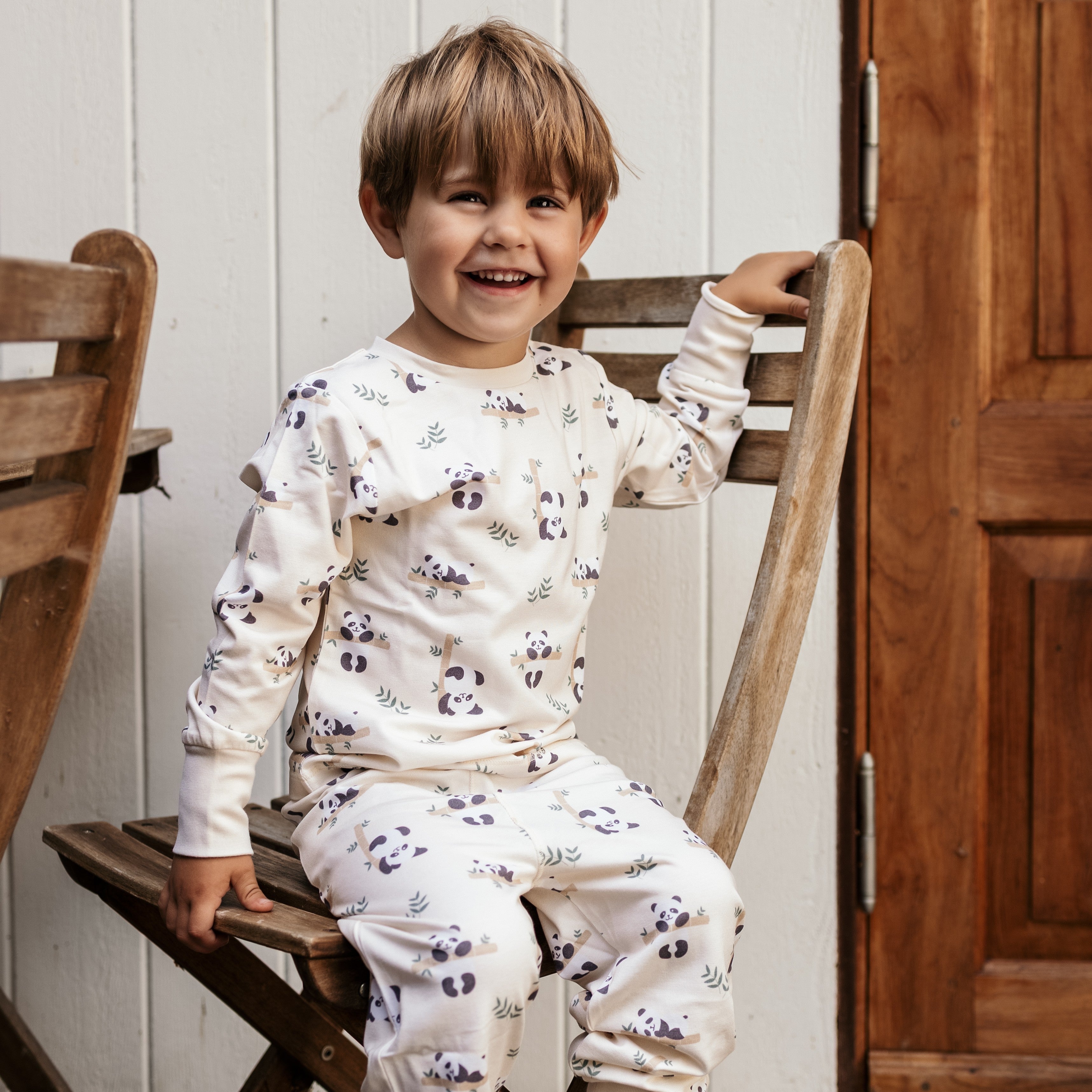Why should you choose bamboo?
"Soft as a teddy bear, cool as a popsicle, and allows free play - without compromising the children's future."
To begin with, it should be emphasized that bamboo is a grass (actually the fastest growing plant on earth!) that reaches its maximum height of around three meters already after three months. This means that bamboo as a resource requires relatively little space to produce larger amounts of material. The fact that bamboo is water-bearing also means that its plantations do not need to be irrigated to a large extent. Furthermore, bamboo plantations require neither spraying nor artificial fertilization, while the bamboo itself actually converts carbon dioxide into oxygen.
Today's bamboo supplies mainly come from plantations, which means that production itself is not a threat to biodiversity in China. The pandas' favorite food in the wild is therefore safe. Bamboo is also known to improve the soil where it is grown. In other words, bamboo is a natural material completely free of chemical additives and thus a sustainable material choice for children's clothing - good, right?! We at Geggamoja are therefore very proud of our bamboo collection and look forward to continuing to contribute to a green future through sustainable production methods and environmentally friendly material choices.
How is bamboo fabric produced?
The inside of the bamboo stem is rich in fibers and is very suitable for making fabric. When producing bamboo fabric for our clothes, a mechanical process is used. This means that the bamboo stem is crushed under high temperature and uses natural enzymes so that the bamboo fibers can be combed out, then spun into yarn. The process is very similar to that required to produce linen fabric from flax and hemp.
4 advantages of bamboo & its unique properties
1. Soft material - Bamboo is an incredibly soft and gentle material against your child's skin.
2. Moisture-wicking function - Thanks to its moisture-wicking function and good breathability, bamboo material also helps regulate body temperature. Compared to cotton, bamboo clothes also have a higher absorption capacity and dry faster. Therefore, bamboo garments are very suitable as layer 1 such as underwear or base layers.
3. Easy stain removal - Bamboo is naturally antibacterial, which simplifies the removal of stains on the garments.
4. Environmentally friendly material - Bamboo is a renewable resource and includes cultivation methods without pesticides, making it a sustainable and environmentally friendly alternative for children's clothing.
Geggamoja's bamboo fabric is a mix of 67% bamboo, 26% organic cotton, and 6% elastane. The fabrics are made in factories that are Öko-Tex Certified, which means that all garments in our bamboo collection proudly carry that label. Geggamoja's design is done by Hanna and Anna outside Stockholm, and factories with good working conditions in Turkey are responsible for producing our bamboo collections. Discover our range of bamboo clothes and bedding sets here!
Bamboo is a natural material, which means that pilling can occur due to friction just like on wool and cashmere garments. Since we at Geggamoja do not use chemical agents in our clothing production to prevent this, we recommend using a wool or cashmere comb or a pilling remover to gently remove pills.
Care instructions
Wash your bamboo clothes and bedding at 30 degrees. Preferably with a gentle detergent and no fabric softener. Also, do not use the tumble dryer but let the garments and bedding air dry. To keep the shape of bamboo products, it is advantageous to let them dry as flat as possible. Wash thoughtfully and therefore do not throw in bamboo garments and bedding that do not need washing. A stain can, for example, be spot cleaned instead of running a full washing machine cycle. This way, your bamboo products last longer while you contribute to the environment by saving both energy and water.
What is bamboo viscose? - Not for us
There is also a less environmentally friendly and chemical process for producing bamboo fabric, called the viscose method. This method involves boiling bamboo leaves and shoots in strong chemical solvents and then bleaching them in several stages. These production methods also pose potential health risks for the manufacturers as well as environmental damage, which means that the viscose method is considered neither environmentally nor socially responsible. Geggamoja's bamboo products therefore do not consist of bamboo viscose and are made without applying the viscose method.


